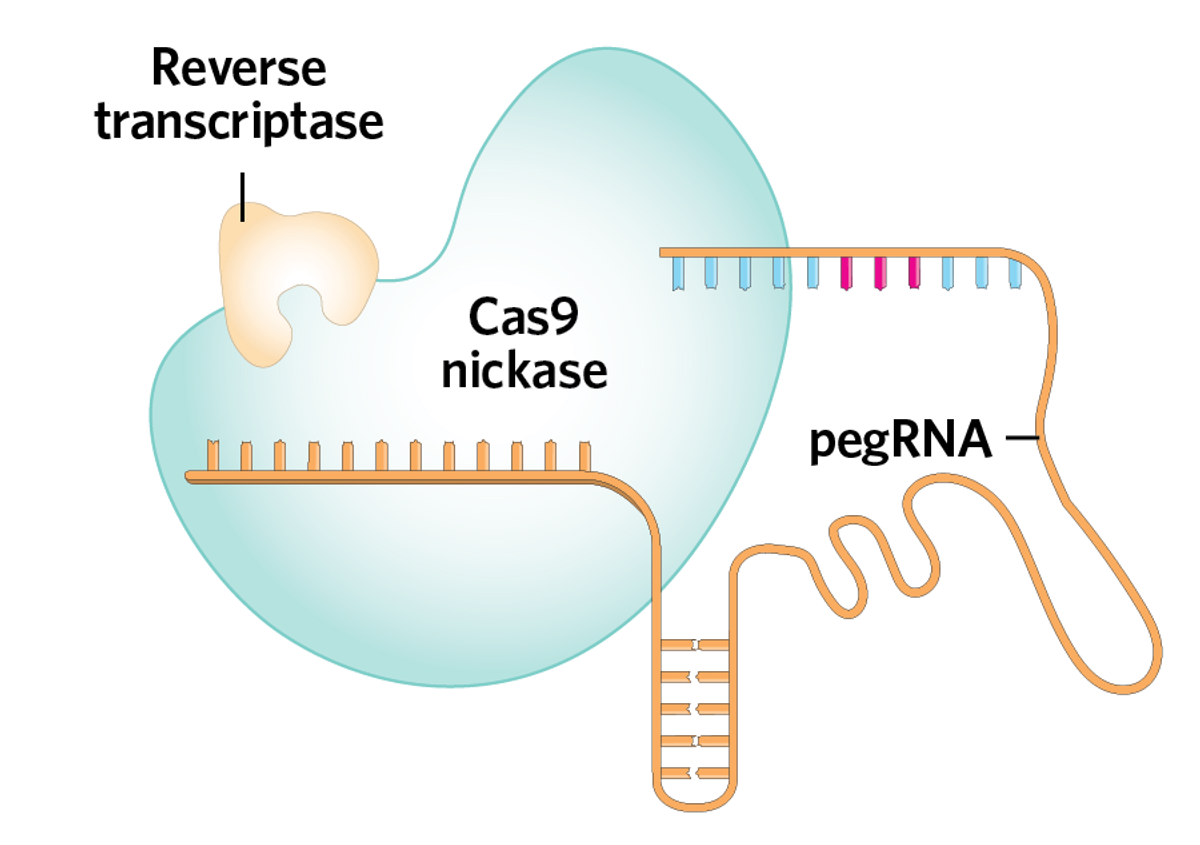 | The prime editing machinery comprises a prime editing guide RNA (pegRNA) and a Cas9 nickase enzyme fused to a reverse transcriptase. |  | |
 | |||
 | The pegRNA binds to a matching sequence on the target DNA strand. |  | The Cas9 nickase cuts the unbound complementary strand, creating a flap. |
 | |||
 | The dangling DNA flap binds to a matching sequence on the other end of the pegRNA. |  | The reverse transcriptase extends the flap by filling in the desired insertion sequence from the template next to the binding site. |
 | |||
 | The edited flap competes with and displaces the flanking nucleotide sequence (right), which is ultimately removed by the cell. |  | The opposite strand is nicked and repaired to match the newly edited flap, completing the edit. |
Reference
- Anzalone AV, et al. Search-and-replace genome editing without double-strand breaks or donor DNA. Nature. 2019;576(7785):149-157.
Read the full story.





